

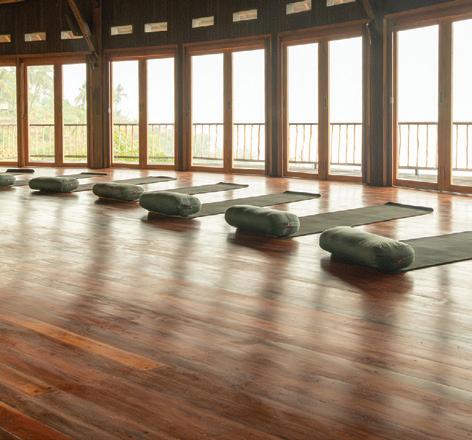












The Royal Australian Mint is celebrating 60 years of history with the Mint60 Exhibition.
This special exhibition takes visitors on a journey from the Mint’s humble beginnings on a sheep paddock to its recent $6.5 million Museum refurbishment in 2024.
Learn about the Mint’s architect, Richard Ure, who also designed Canberra’s iconic Black Mountain Tower. Unearth secrets of the Mint and discover why the solid rock encountered during excavation turned out to be an unexpected benefit.
See rare historic photos, including one of Prince Philip officially opening the Mint on February 22 1965. The Duke of Edinburgh was presented with a Year Set, which he gifted back so it could be displayed in the Museum. There is also a photo of Queen Elizabeth II inspecting machinery at the Mint in 1970.
Discover never before seen coins from our National Coin Collection, including the Beauty, Rich & Rare –Daintree Rainforest $100 Coloured Gold Proof Domed Coin and the Australian Rainforest Cassowary $200 Gold Proof Coin. Also on display are beautifully designed medallions and tokens, including the National Antarctic Research Expedition Bronze Medallion and WWF for Nature Western Swamp Tortoise Token.
The robot featured in the Mint60 Exhibition was affectionately named Roxie by the Mint’s coin packing team in 2004. Roxie picked and packed coins using a camera to ensure they were facing the right way. Able to run day and night, Roxie was finally retired in 2021.
The exhibition is on until May 11.
Royal Australian Mint, Denison Street, Deakin, call 1300 652 020, email hello@ramint.gov.au and the website is ramint.gov.au

The gallery that’s always had an audience
One of the Mint’s features is its viewing platform, where the public has been able to view the workings of the factory since 1966. The platform has evolved since then and is a highlight of any visit to the Mint Museum.
Scan to learn more
Free entry, open 7 days Denison St, Deakin ACT 1300 652 020 | ramint.gov.au
Reducing the chance of heart attack and stroke is simple. Don’t miss your flu and covid vaccinations.
A huge cohort study in England found continuing covid vaccination has a protective impact on the cardiovascular system. Unfortunately, these findings, and others like them, come at a time when annual rates of vaccination for flu and covid are on the decline.
The study of 45.7 million people in England, published in the journal Nature Communications, examined vaccinations that followed the initial two doses for covid. The study offered “compelling evidence supporting the net cardiovascular benefit of covid vaccination”.
The authors reflect on the rare occasions of cardiovascular incidents following the first or second dose of the covid vaccination. However, a series of studies have identified that the risk of such events, even for the first two doses of vaccine, was significantly higher from catching covid disease than from the vaccination.
Another study in Nature Health concluded: “Our findings showed the risk of thrombocytopenia and venous thromboembolism was not increased after COVID-19 vaccination, while the risks were substantially higher after SARS-CoV-2 infection”.

populations.
There are also multiple studies identifying the protective side effect of the flu vaccination against heart disease.
Access to annual vaccination has been made so much easier since the advent of the pandemic. GPs along with many pharmacists provide a vaccination service for influenza and for covid. It might take a little effort, but it is worth keeping up to date with such vaccinations.
One of the challenges for governments, at a time of increasing anti-vax activity and misinformation, is how to remind people of the advantages of vaccination across the life course.
Vaccination of children in the early years is clearly set out throughout the world in guidelines produced by governments and well understood by general practitioners

There are multiple studies identifying the protective side effect of the flu vaccination against heart disease.
and most parents. The same is not true for older people.
Although Australia is an international leader for maintaining a register of vaccinations in older adults, much more that can be done. Most of us can access the MyGov website and see our own vaccination record. This has been particularly useful when travelling overseas, and will remain useful in times of vaccine preventable disease outbreaks. There are those that question the efficacy of vaccination. A few historic examples help to counter such misinformation. Smallpox has now been eliminated through vaccination. When Samoa had its measles outbreak in 2017 it recorded 83 measles-related deaths. This is in a population about the same size as the ACT. Even though measles infections are preventable,
with vaccination rates reducing, there are outbreaks worldwide.
Efforts from around the world from organisations such as Rotary, UNICEF, Gates Foundation, WHO and GAVI have focused on ridding the world of polio. There were 109 cases of Wild Polio Virus in 2024 and just 10 so far this year. These cases were all located in remote areas on the Pakistan/Afghanistan border.
As reported by the Global Polio Eradication Initiative, since 1988 there are “20 million people who are walking today who would have otherwise been paralysed by polio”.
In my role as chair of the International Immunization Policy Taskforce of the World Federation of Public Health Associations, I had the privilege of launching “A Call to Action on Life Course Vaccination” during World Immunization Week (April 24-30).
Joining my own organisation was the World Medical Association and the International Council of Nurses along with another six international associations representing doctors, pharmacists and other health professionals.
Additionally, the International Federation on Ageing has been particu-
larly active in the “Call to Action”. Demonstrating the importance of vaccination for all of life has been a key driver for that federation. Studies such as the one on cardiovascular disease have been important drivers.
A key message of the “Call to Action” is ensuring “all recommended vaccines are accessible, affordable, and available”. This applies first to all health professionals and then more generally. For its part, the World Health Organization argues vaccination is second only to clean water and sanitation in protecting the health of populations.
Reflecting on the “prevention paradox”, it is a challenge for public health, and vaccination in particular, that the more successful the programs are, the less they seem necessary. Well, at least until the next outbreak!
Michael Moore is a former member of the ACT Legislative Assembly and an in dependent minister for health. He has been a political columnist with “CityNews” since 2006.

In Junior School at Eddies, your child will thrive with specialised classes in: - Wood Technology - Food Technology - Physical Education - Music Plus, our extensive co-curricular program ensures every student has the opportunity to explore, grow, and shine— both in and out of the classroom.



A woman came into my clinic for a consultation about her hearing aids, telling me her hearing aids were 4 years old and she had never found them to be of much help. She said the salesperson quoted her $14,000 for a pair of hearing aids, however, the monthly special of 20% discount meant they cost her $11,200. So, she ‘only’ paid $11,200 for hearing aids that did not help her. Sadly, I hear this all too often.
Here are some things to do to avoid this type of problem:
1. Visit your GP. If you or someone you know has a problem with their hearing, visiting your GP to check for wax in the ears, and to get advice is a starting point.
2. Qualifications. Always check the qualifications of the person you are dealing with. A person without professional qualifications has no business advising you about your hearing. They need to belong to a professional association with a Code of Conduct, so you know they are acting in your best interests, not their own.
years. If you are not sure about their advice, then seek a second opinion. The wrong hearing aids can be an expensive waste and could lead you to stop wearing them. You should always have a trial of hearing aids to ensure that they are right for you.
6 Pensioners and eligible DVA card holders often have entitlement to free services. If you are covered by a government concession, then let the clinician know (even though your clinician should ask). Eligible clients may obtain free hearing tests, consultations, and free hearing aids (referred to as fully subsidized hearing aids).
“A person without professional qualifications has no business advising you about your hearing. They need to belong to a professional association with a Code of Conduct, so you know they are acting in your best interests, not their own.”
– Dr Vass
These hearing aids are appropriate for many people, however if you have great difficulty hearing in background noise (for example a restaurant), then you may want to consider partially subsidized hearing aids. This is when the government pays a certain amount, and you pay for additional features and benefits. Your decision should be based on the following:
you are dealing with a qualified clinician, then they belong to a professional association. The best contact is an independent complaints body referred to as Ethics Review Committee. You can email ethics@auderc.org.au and view the website www.auderc.org.au. You can make an anonymous complaint and your complaint will be handled in a confidential and professional manner. If you are in the ACT, contact the ACT Human Rights Commission email human rights@act.gov au and the website www.hrc.act.gov.au
3. Independent advice. You should get independent, professional advice.
4. There are a wide range of hearing aids out there. Finding the right hearing aids for your communication needs can be challenging. Hearing aids vary in price and performance. Bluetooth® connectivity and rechargeable hearing aids are available on most hearing aids, along with apps that allow you to control your hearing aids from your mobile device. Be aware that just because a hearing aid is more expensive, that doesn’t mean they are the best hearing aid for you.
5. Just as hearing aids vary in performance, clinicians may also vary in performance due to training, experience, and skills. Make sure that you are comfortable and confident in their advice. You are likely to be with this clinician for the life of your new hearing aids, typically 4 to 5
(a) Can you afford the more expensive hearing aids? Don’t go into financial stress if you can’t afford them. (b) Are you clear on the free vs partially subsidized features & benefits? Never believe someone who tells you the free hearings are not good or of poor performance, this is simply not true. (c) If you try the partially subsidized hearing aids and are not happy, then return them. Do not keep hearing aids because you think the failure is yours or that you will improve over time. If the hearing aids are not working for you in the trial period, then they will not work for you in a year or two.
7. If you have a complaint, then seek help. Your clinician should be able to help you through most of your needs. Sometimes, a problem may be beyond the expertise of even the best clinician. However, if you have a complaint there are things you can do. If




Join us for a heartfelt memorial ser vice to honour the mothers who are forever in our hearts Sat 10 May, 10 - 11am
White Lady Belconnen Contemporary Chapel 101 Nettlefold Street, Belconnen
Please RSVP by Mon 5 May to Cassandra at actoperations@invocare com au Light refreshments will be ser ved
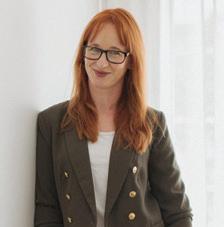

AMY ARBERY ELM Communications
EVENT DETAILS:
Guest Speaker: Amy Arbery from ELM Communications
Date: Tuesday 13th May
Time: 6.00pm - 8.00pm
Venue: EQ Cafe, Deakin
TOPIC: The Power of Behavioural Science
Join Amy, behavioural science nerd as she unpacks how your brain actually works when it comes to getting things done. We’ll cover everything from managing energy and building confidence to hacking your environment and tricking yourself into productivity—using evidence-based tools like habit loops, implementation intentions, and the art of saying “no” like you mean it. Expect practical tools to help lift your productivity.
Ticket link: https://events.herzest.com.au/event-may
‘Our local expertise makes a big difference. We know the climate, the homes and what works best here’
‘We focus on spending time with our clients to understand how they use their home and their specific comfort needs,’ says air conditioning expert PAUL OXFORD in this advertising feature provided by Daikin, showcasing Delta Air Conditioning & Heating.
Delta Air Conditioning & Heating has been providing heating and cooling solutions in Canberra for more than 50 years.
Founded in 1972, the business is now a multi-awardwinning super dealer for Daikin.
Paul Oxford took over the business from his father and mother, David and Christine Oxford, in 2016 and continues to build the dealership through the delivery of tailored solutions, prioritising sustainability, and supporting the community.
After 50 years in business, and more than 15 of those as a Daikin dealer, Delta Air Conditioning and Heating knows a lot about the importance of tailoring air conditioning solutions to fit the particular individual needs of a home and family.
“Every customer and house has a different set of requirements. The right system can make a huge difference when it comes to family wellbeing and avoiding discomfort or agitation,” Paul said.
“Ensuring everyone stays comfortable, no matter the season, is our priority, which is why we focus on spending time with our clients to understand how they use their home and their specific comfort needs.”
He said the years of expertise and close connection with Canberra locals had given the business a deep understanding of the small details that could significantly enhance comfort – details that might be overlooked if purchasing online.
“Some customers might feel the cold more than others and require a warmer setting, while others might have

Owner Paul Oxford, centre, with members of the Delta Air Conditioning & Heating team.
specific needs due to the rooms they use most or even the furniture they use, like a favourite chair that might get colder than other spots,” Paul said.
With summer temperatures soaring past 40C and winter nights dropping below freezing, understanding the variability in weather was crucial to tailor heating and cooling solutions.
“Our local expertise makes a big difference,” Paul said.
“We know the climate, the homes and what works best here, which is why the team factors in everything from room usage, insulation and customer preferences when recommending Daikin systems,” he said.
Delta Air Conditioning & Heating, 10/45 Tennant Street, Fyshwick. Call 6280 4211 or visit deltaairconditioning.com.au


• Use the timer function: Set your air conditioning or heating system to turn on at least an hour before waking up or arriving home. This ensures the house is at a comfortable temperature when you need it most, eliminating the chill of winter mornings or the heat of summer afternoons.
• Prioritise clean filters: Clean filters are essential for efficient
heating and cooling. Set reminders to check and clean your filters regularly, especially in Canberra’s dusty conditions, to keep the air flowing smoothly and reduce energy usage.
• Adjust with the seasons: To maintain consistent comfort without overworking your unit, gradually adjust your system’s settings as the seasons progress.
Get a 0% interest loan for your upgrade
Canberra’s shift from gas to electrical systems was being supported by initiatives such as the ACT Government’s Sustainable Household Scheme, which provides zero-interest loans to help with the cost of energy-efficient home upgrades, Delta Air Conditioning & Heating CEO Paul Oxford said.
Delta Air Conditioning & Heating was playing a key role in this transition by educating its customers on the benefits of reverse cycle systems.
“Due to the extremes in the local weather, reverse cycle systems are more energy-efficient and, therefore, better suited to Canberra’s diverse climate. They offer significant cost savings and while also aligning with environmental goals,” Paul said.
“While these systems are different from traditional gas heating, they still provide the comfort people expect, but with less energy consumption. By educating customers on how to use these new systems effectively, we can help people make more informed, sustainable choices for their homes.”

ROD HENSHAW
Canberra character, the irrepressible Pat Seears, these days the high-flying king of workwear, but it wasn’t always like this…
He is only half joking when he tells me he was kicked out of his Cooma family home, one too many mouth to feed, when he was 17.
It’s a story I’ve heard several times over the years I’ve known Pat Seears and it’s part of a life journey that has fascinated me for some time.
This time, however, differs vastly from our previous gettogethers when our conversa tions have been accompanied by copious draughts of libation, on those occasions where a small group of mates meet over lunch every so often.
For this account, we’re sitting in his Seears Workwear office in Barrier Street, Fyshwick, at 10 in the morning. From a small start in Canberra he has built his company into a leading supplier of workwear in Australia, with major outlets in Queensland and NSW and is known locally for his television ads that end with his signature

poor old mother ever had any money to pay the fees, but the nuns there accepted it and took us on. But things were bad.”
a hard time when you’re young like we were, when you’ve got nothing, you strive harder to actually prove something with



description is a little harsh.
“I was about 17. Poor old mother said to me, ‘son, I really can’t afford to keep you here’. I was the second eldest and the other boys were still at school,” he says.
“So, Christmas, 1971, I packed up and hitchhiked to Canberra.”
With no set plan and very little money, Pat managed to rent a room at the old Ainslie Hostel. He still remembers his room number, J9.
He wasted no time finding a job as a brickie’s labourer in one of the first suburbs to be established in Belconnen. There was only one way to get to work.
“I would walk from Ainslie to Weetangera and Aranda to go to work. For $3 a night at Ainslie, you got breakfast. I never got breakfast; I had to leave too early,” he says.
sub-contracting around Canberra for about 14 years and was doing quite well until the taxman paid a visit.
“We had a couple of houses because we were all in the building game and we built them,” he says.
“They said ‘you can’t have all this’ and hit me with a big bill. I said bugger this, I’m not going to keep working like this for these sorts of results.
“I was always interested in business and I got the opportunity to get involved in the workwear industry, so I went from there.”
With a business partner, they opened a small shop in Paragon Mall in Fyshwick but after 14 years, the two decided to go their respective ways.
“My partner bought me out and I (eventually) started here in Barrier Street in 2002.”
Now, 23 years later, The
not just confined to Australia.
“My old man loved cars, and I spend as much time as I possibly can going to car races,” he says unashamedly. For a kid “kicked out of home” at 17, Pat’s done well. Just how well, he’s coy about it except to concede it will be quite a few years yet before his name appears on Australia’s Top 250 Rich List.
“It’s not about the money, it’s more about achievement,” he says.
Son Shane has become a key part of the business and while Pat still turns up for work at 6 every morning, Shane shares a lot of the responsibility in running the show on a day-to-day basis.
Pat also believes Shane’s son Lachlan will probably follow in his father’s and grandfather’s footsteps eventually, thus ensuring generational continuity well into the future.

So, when it comes to Pat Seears, now ya know… the
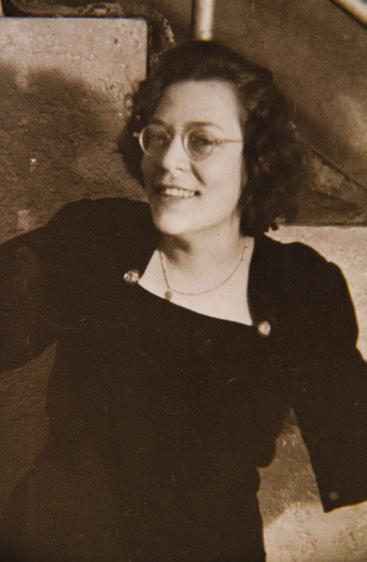
“The trouble with jogging is that the ice falls out of your glass.” –Martin Mull (American actor)
Jogging undoubtedly provides short-term health benefits, but whether it’s good for you in the long term is less certain.
Many of those who started jogging when it became trendy in the 1970s, now have knee and hip problems. So, what are the pros and cons of jogging?
Pros of jogging

• Jogging is an excellent cardiovascular workout that strengthens the heart and improves circulation. Regular jogging helps lower blood pressure, reduces LDL cholesterol (the “bad” cholesterol), and raises HDL cholesterol (the “good” cholesterol). Over time, these benefits can decrease the risk of heart disease and stroke.
• Jogging burns a significant number of calories, making it an effective exercise for weight loss or maintenance. It also boosts metabolism, which means the body continues to burn calories even after the workout is finished.
• Jogging has a positive impact on mental health. The release of endorphins during exercise can improve
mood, reduce stress and combat depression and anxiety. Many joggers also find that the repetitive motion and rhythm provide a meditative effect, helping to clear the mind.
• As a weight-bearing exercise, jogging promotes bone density by stimulating bone growth. This can be particularly beneficial in preventing osteoporosis, especially in older individuals.
• Jogging requires minimal equipment – just a pair of good running shoes – and can be done almost anywhere. Whether in a park, on a treadmill, or around the neighbourhood, jogging is accessible to most people.
• Over time, regular jogging increases lung capacity and builds stamina,
enabling individuals to perform daily activities with less fatigue. Jogging can be a social activity. Many people join jogging groups or participate in community runs, which can help build relationships and foster a sense of community.
What about the cons?
One of the most significant downsides to jogging is the risk of injury. Common issues include shin splints, runner’s knee and stress fractures, especially for beginners or those who overdo it. Improper footwear, poor running technique (such as swinging the legs sideways), and overtraining can exacerbate these risks.
• The repetitive impact of jogging can put stress on the joints, particularly in the knees, ankles and hips. This is a major concern for individuals with arthritis, existing joint issues or those who are overweight. In such cases, low-impact exercises such as swimming or cycling would be preferable.
• Outdoor jogging is often subject to weather conditions. Extreme heat, cold or rain can make jogging uncomfortable or even dangerous. While indoor treadmills are an alternative, they may not provide the same level of enjoyment or variation in terrain.
• For busy individuals, finding time
to jog regularly can be challenging. To reap the full benefits, jogging requires consistency, which may conflict with other responsibilities.
• Jogging too frequently or intensively without adequate rest can lead to overtraining syndrome. Symptoms include chronic fatigue, decreased performance and an increased risk of illness. Balancing jogging with rest and other activities is essential.
• Some people may feel pressured to jog to meet fitness or weight-loss goals, leading to stress or negative self-image if progress is slow. This can take the enjoyment out of the activity.
• Urban joggers may face challenges such as air pollution, traffic and uneven pavements, which can affect the quality and safety of their workouts and may even have detrimental health effects.
The key to maximising the pros and minimising the cons lies in proper preparation and moderation. Wearing appropriate footwear, warming up, maintaining good form, and listening to your body can significantly reduce the risk of injury and ensure that jogging remains an enjoyable and sustainable activity.
On a lighter note
Brendan’s daughter Flo said her prayers every night. One night instead of blessing grandma, Flo said: “Goodbye, Grandma” – and the next day Grandma died.
A few weeks later, Brendan overheard her say: “Goodbye, Grandad” – and the next day Grandad died.
You can imagine Brendan’s panic when a few weeks later, Flo said: “Goodbye, Daddy”.
The next day Brendan avoided jogging. He didn’t eat and stayed at work until midnight. Relieved to have survived the day, he then went home. The next morning his wife commented: “You were very late coming home last night.”
Not wanting to seem stupidly superstitious, Brendan responded he’d had a tough day completing a major project.
“I can sympathise,” said his wife, “I too had a tough day. As you know, I work at the same school as an old boyfriend and to everyone’s shock and surprise, he suddenly dropped dead yester day.”
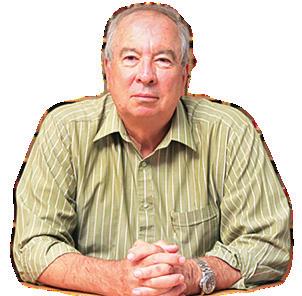

‘People with dementia who wish to access VAD… face a heartbreaking ‘Catch-22’: In the early stages of their illness, when they have decision-making ability, they are not sufficiently advanced in their illness to qualify as ‘approaching the end of life’. In the later stages, when their dementia is advanced, they are ineligible because they usually lack decision-making ability.’
‘Even in the ACT, where there’s no set time frame in the VAD law, two medical practitioners must still agree that the person is ‘approaching the end of life’. For someone newly diagnosed with dementia, death may be years – sometimes even a decade – away’. www.gogentleaustralia.org.au/dementia_and_vad_a_complex_issue
Dying with Dignity ACT is campaigning to remove the Dementia Catch 22 in the VAD law
The Legislative Assembly will debate possible changes to the VAD Act later in May. We are asking the ACT Legislative Assembly to amend the Voluntary Assisted Dying Act 2024 then to permit persons with Dementia who still have decision-making capacity, to be eligible to access voluntary assisted dying so that they can die with dignity at a time of their choosing’.
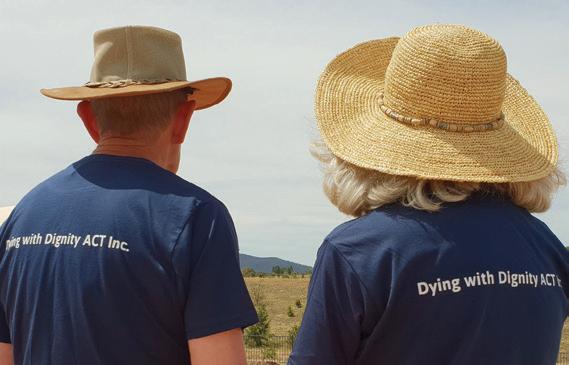
Persons with Dementia should be provided with sufficient financial, personal, and social support to allow them to live with dignity, and, if they wish they should be able to access voluntary assisted dying so that they can die with dignity at a time of their choosing.
Voluntary Assisted Dying and Dementia – know the facts
1. AIHW estimated, in 2023, that there were 411,100 Australians living with dementia. 19% of persons with Dementia, aged 70-74, were in Cared Accommodation; 26% aged 75-79; 39% aged 80-84; and ~47% aged 85 and over.
2. Suicide rates are high in the first year being diagnosed with Dementia, and reduces slowly after that.
3. Dementia is the main cause of death for Australian women and the second cause for men.
4. Making an Advance Care Plan does NOT allow access to VAD for any circumstance.
How to support the campaign
Email your local members – one, or all five of them – and say ‘I support the Dying with Dignity ACT campaign to remove the ‘Dementia Catch 22’ from the Voluntary Assisted Dying Act 2024. I trust that you will take action to support it’. Don’t know your local members?
Go to www.parliament.act.gov.au/members/find and enter your suburb. This gives your local members and access to their email.
Held annually in May, Law Week is celebrated across Australia to promote public understanding of the law and its role in society.
From May 13-23, the Law Society in Canberra and their partners run a selection of events to celebrate and engage with the local legal profession. Every year, Law Week proceedings, along with the ACT Law Society Foundation, donates to a local charity. This year, they are supporting Roundabout Canberra, a volunteer-powered charity that provides safe, high-quality, essential baby and children’s items to families in need. In 2024, Roundabout Canberra supported almost 5000 families.
Law Week celebrations include
• An awards dinner at Pialligo Estate from 6.30pm, Friday, May 16, to celebrate the outstanding contributions of individuals and firms to the ACT legal community.
• The 2025 Blackburn Lecture will be given by Justice David Mossop, a resident judge of the ACT Supreme Court, at the ACT Law Society Training room, 1pm, on Tuesday, May 20. The lecture will provide suggestions as to how Australian lawyers can contribute to making Australian democracy more robust. It will address external challenges to Australia’s democracy, particularly those arising from the changes in the information landscape. The lecture will contend that the challenges are such that active measures need to be taken to ensure that Australia’s democracy is able to survive them.
A Working with Indigenous Clients and Cultural
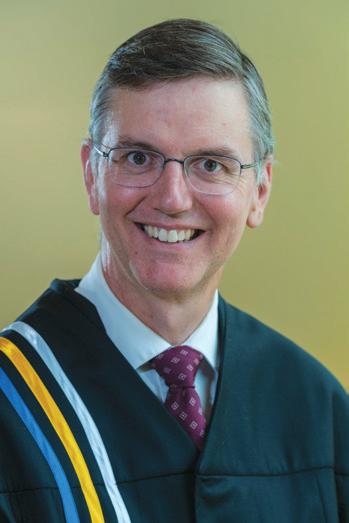
Committee, it will be held at the ACT Law Society Training Room, from midday on Monday, May 19. Activities open to the public on Friday, May 23, include a mock jury empanelment, a “You be the Judge” event and a court tour.
ACT Law Week. May 16-23. Visit actlawsociety.asn.au
Having a will ensures your wishes are clear and helps your loved ones avoid unnecessary stress, says BDN Lawyers principal director Lorraine White.
“Without a will, the law decides how your estate is divided, which might not reflect your true wishes,” she says.
“A well-prepared will allows you to choose exactly who will receive your assets and how much they will get.”
Providing trusted legal services in estate planning, drafting wills and estate administration, Lorraine says BDN Lawyers can provide friendly and professional advice to help you create a will that meets your needs.
“Many accountants also recommend considering a testamentary trust when making your will,” she says.
“These trusts can protect your assets and offer tax advantages for your beneficiaries.
“Of course, trusts aren’t right for everyone, so it’s best to discuss your personal situation with us.”
With the rise of property values and the evolution of blended families, Lorraine says estate disputes are also a common occurrence.
“Sometimes, disagreements arise after a loved one passes away, especially with increasing house values and superannuation balances,” she says.
“While many estate disputes go to court, not all do.
“At BDN Lawyers, we work hard to resolve issues quickly and cost-effectively, minimising stress for everyone involved.”
BDN Lawyers, Level 1, 1 Farrell Place, Civic (call 6130 1999) and 260 Crawford Street, Queanbeyan (call 6299 3999). Visit bdn.com.au
At Neilan Stramandinoli Family Law, we pride ourselves in our proven track record, our commitment to excellence, and expert knowledge of family law. We understand how difficult and emotional family law matters can be; we are compassionate and empathetic, guiding you towards the best possible solution.
For separating couples:
• Parenting arrangements
• Dividing property and superannuation
• Family violence matters
New or existing relationships:
• Best arrangements for your children
• Protecting assets and yourself
• Preserving entitlements






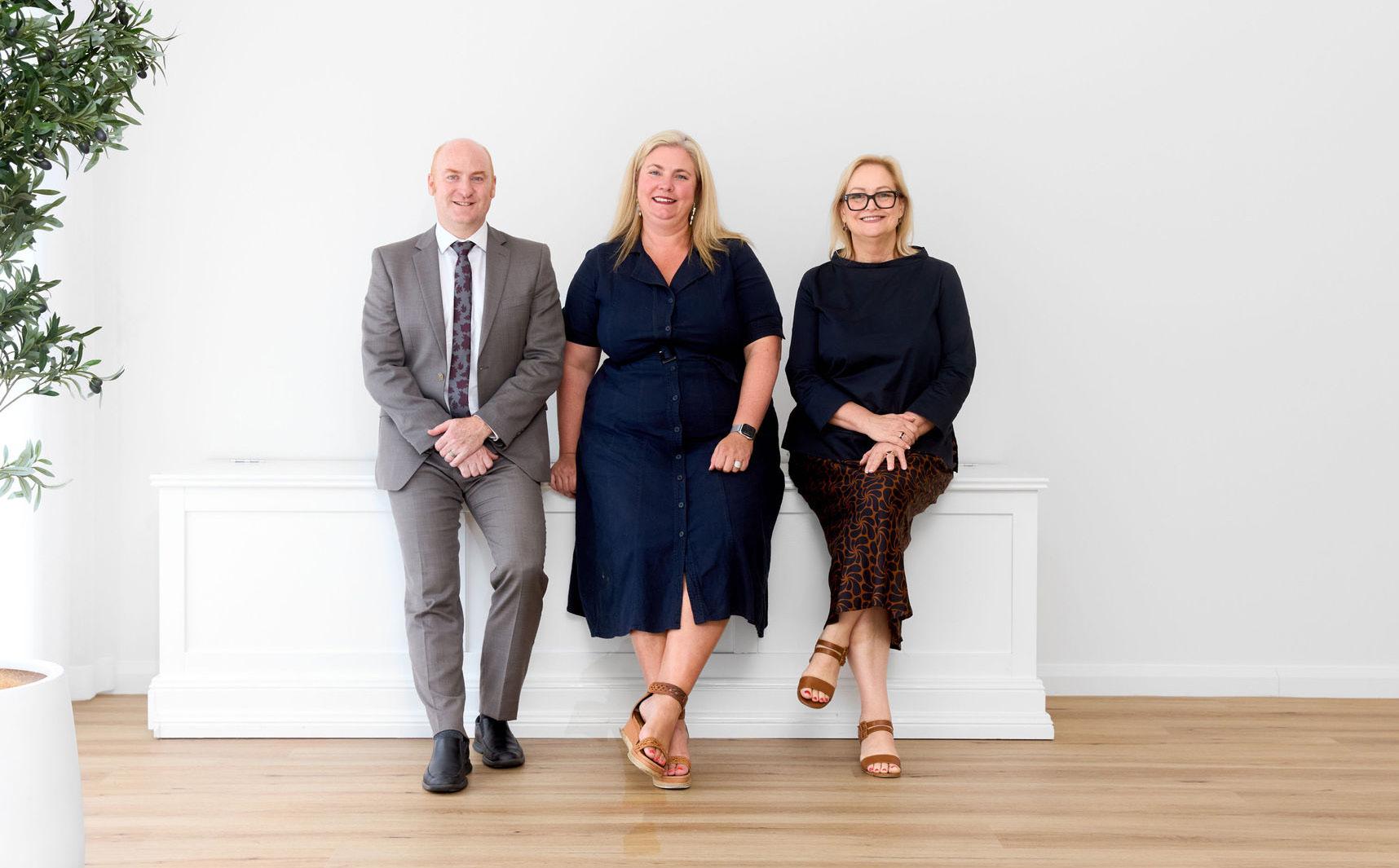
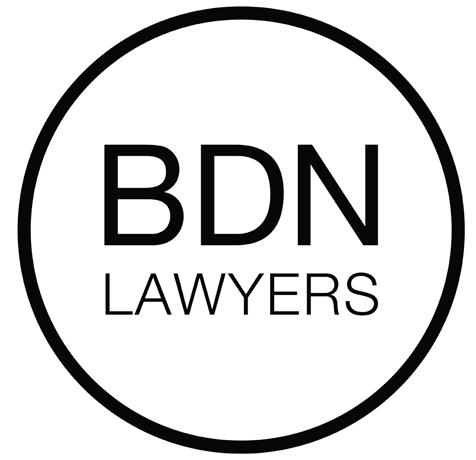
With an average maximum temperature of 12C in the winter and 0C overnight, Canberra is the c-c-coldest capital city in Australia, even beating out Hobart.
Sitting inland, Canberra is about 600 metres above sea level, unlike the other coastal capital cities in Australia.
It’s due to the lack of moderation from the ocean that Canberra often experiences scorching summers and those bitterly cold winters. Described as “sink-like”, Canberra’s location –nestled beneath the mountains – means heavy, cold air settles over the city creating our well-known foggy mornings.
It’s now the time to ensure your home is warm and cosy through the cold months of winter and beyond. Here are some of Canberra’s experts keeping you cosy this winter.
For more than 25 years, Carpet One & CBI Blinds and Awnings have served the Canberra community from their Mitchell showroom.
Owned and operated by Paul Gann and his partner Leonie, their family-run business is backed by a team with more than 100 years of combined industry experience.
“Our experienced team is ready to help with all flooring needs, from carpets and timber to laminates and vinyl planks,” says Leonie.
Under the same roof, CBI Blinds & Awnings offers a selection of internal and external window furnishings, including popular options like Verishades, roller blinds, Honeycomb and vertical blinds, shutters, curtains, Ziptrak blinds, outdoor awnings and external shutters.

Design plays a pivotal role in ensuring the energy usage in a house is as low as possible, says Reimagined Habitat owner, Michael Drage.
“We did our research into Canberra houses and built our business on the energy analysis that we found.”
Michael says his research showed the two biggest drivers for real performance to a home were the airtightness, and the quality and performance of the windows.
This led him to a global search for the best products and eventually he established Net Zero Plus, which imports European, high-efficiency windows and prefabricated building systems.
“Our research drove this thinking. We now have access to triple-glazed windows after discovering that even comparing the best quality in double-glazed to tripleglazed windows showed a reduction as much as half of the energy costs,” he says.
Leonie says they’re also Canberra’s trusted specialists in Oztech retractable roof systems.
“We provide free design consultations and on-site measures, allowing us to identify potential issues early in the process,” she says.
“Our in-house magazine also serves as a
visual guide to help customers discover the perfect style for their home.
“With tailored package deals available, Carpet One and CBI Blinds & Awnings delivers cost-effective flooring and window treatment solutions, all from one trusted supplier.”
Carpet One and CBI Blinds & Awnings. 141 Flemington Road, Mitchell. Call 6241 5666 or visit carpetone.com.au/mitchell and cbiblinds.com.au
“It’s also important to look at the airtight quality of windows.
“The prefabrication design process ensures airtight windows that drive energy efficiency.”
Finding a connection between prefabricated systems and triple-glazed windows, Michael says the creating net-zero housing is a fast process that is priced very competitively.

“We are aiming for carbon net zero housing,” he says.
Despite only launching a few weeks ago, Michael’s Net Zero Plus initiative has already seen a 9-10 star efficiency rating.
Reimagined Habitat and Net Zero Plus, 18 Creswell Street, Campbell. Call 0419 391282, or visit reimaginedhabitat.com.au

with

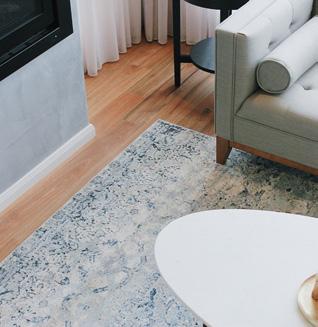



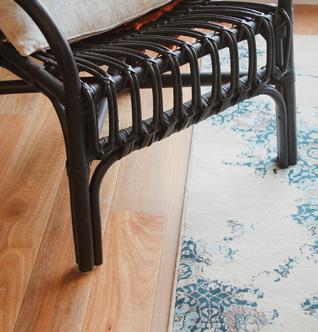










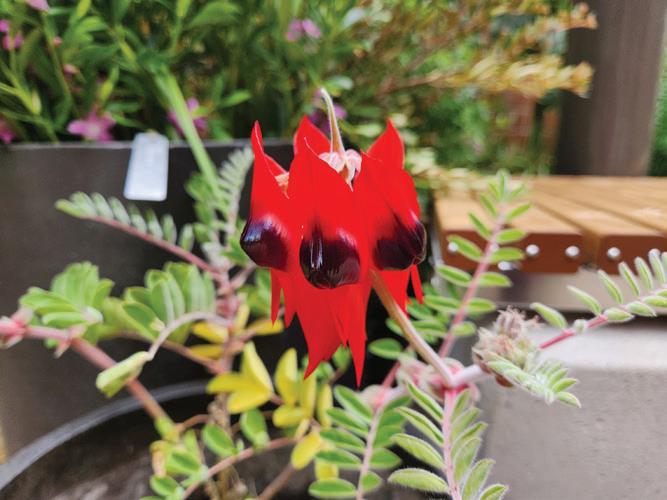
By Jackie WARBURTON

Feverfew is a tough, little cottage plant that flowers now and sporadically throughout the year.
Tanacetum parthenium is a small, upright plant that has many medicinal properties and can be mistaken for a camomile with its similar flowers.

Feverfew is from the Asteraceae and daisy family with its cheery flowers and fern-like foliage. It can be hard to propagate, but as a shortlived perennial, it grows happy where it self-seeds.
It can be used in country gardens and its strong aroma can help keep rats and rabbits at bay.
Another Tanacetum herb common to us that has been growing alto -
gether too well is Tansy (Tanacetum vulgare), a listed weed Canberra and the Southern Tablelands.
With old-fashioned, yellow button flowers and pungent fern-like foliage, it can take control of native bushland in no time.
But not all Tanacetums are bad. In fact the best of all is the Pyrethrum daisy (Tanacetum cinerariifolium), which is good for pollination for bees.
Not all plants of the same species have the same weedy growth and knowing plant names before planting them will help prevent the wrong plant becoming an unwelcome escapee into the bushland.
A NATIVE plant to try is Sturt’s desert pea (Swainsona formosa)
Known as the floral emblem of South Australia, its flowers are striking, although a challenge to grow in our climate.
The Australian Botanic Gardens grow them quite successfully
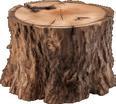

and can be seen in flower around about now. They are an annual or short-lived perennial and like arid conditions.
They can grow successfully in pots in Canberra using a native potting mix only and with no need for fertiliser whatsoever.
Its seed will need to be soaked overnight before sowing and covered with sand in an unglazed terracotta pot with lots of sharp sand mixed into native potting mix.
Water sparingly to prevent rot. Bottom watering can be more successful but overall, they’re very tricky to grow, but worth the challenge with the most amazing vibrant unusual flower.
THIS is a good time of the year to assess the garden and look for spaces for edimentals (a portmanteau combining “edible” and “ornamental”, ie plants that are visually appealing and edible).
With foliage and fruit benefits, they maximise the use of garden space.
All parts of the garden can be created into an edible living space with feijoas, figs and persimmons for shade trees, hedges of blueberries, rosemary or gooseberries and groundcovers of all the herbs we can grow.
This style of garden needs plan -
ning, a design schedule and a load of work. But once implemented, a thriving edimental garden is rewarding with loads of produce.
PUMPKINS will need to be brought indoors before any heavier frosts come and spoil the skins. Remove pumpkins with the stalk still attached and store in a cool, dark place where it is dry and out of direct sunlight. Keep turning every few weeks to prevent rotting and eat, cook and freeze as much as possible as some varieties will keep longer than others.
Keeping the seed of a favourite pumpkin is possible, but may not always grow true to type. Choose Heirloom pumpkin varieties or F1 hybrids to ensure you get the right seed.
jackwar@home.netspeed.com.au
• Plant broad beans directly into the soil.
• Plant native Erica darleyensis for winter colour.
• Prune hazelnuts after the crop has fallen.
• Divide rhubarb now and through winter.

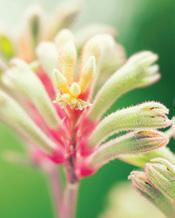
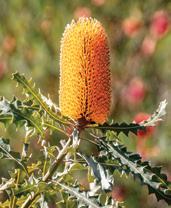


By Helen MUSA


It’s not an Agatha Christie year for Tempo Theatre – it’s time for a good laugh instead.
That’s how director Jon Elphick sees it, as he explains how the venerable community theatre group alternates its most popular repertoire choices year by year.
In 2023, for instance, Tempo scored a hit with Basil Thomas’ 1950s British comedy of manners, Book of the Month and now, turning again to a Thomas script, they’re staging the play, LoveBirds.
“We like a bit of comedy,” Elphick says. “Tempo has found a great way to forget all our troubles for a couple of hours.”
He’s singing from exactly the same songsheet as Lachlan Houen, who’s been directing Noël Coward’s Blithe Spirit over at Canberra Rep, a play with one uncanny resemblance to LoveBirds.
Yes, there’s a ghostly spirit in it.
Newly married couple Julie (Eloise Willis) and Bertie (Bradley Jones) are given a budgie as a wedding present, but it turns out that the bird is possessed by the spirit of Julie’s late first husband, Cecil, who wants to make trouble for them, not unlike the ghostly Elvira in Blithe Spirit.
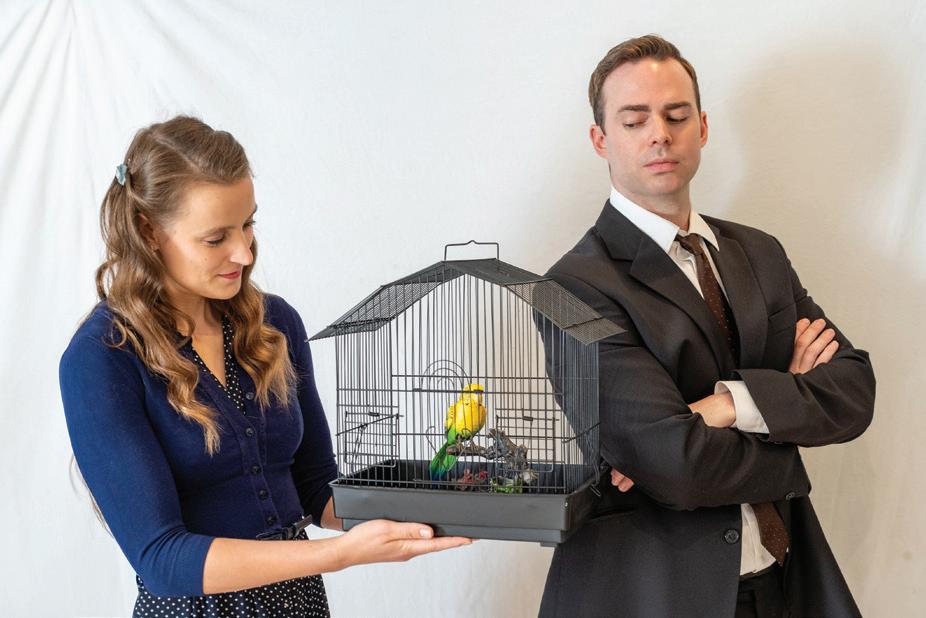
budgie of Cecil’s malevolent spirit. Without committing too many spoilers, Elphick has a few of the answers, although our conversation on the phone is, disturbingly, interrupted by some eloquent tweeting – yes, there’s a real-life budgie in the background, but not the one that’s going
The budgerigar is actually a native Australian bird, but that fact doesn’t feature in this silly play, which suggests that it’s South American.
As you’d expect in a comedy, there’s a lot of extraneous fun.
For instance, Julie and Bertie have both
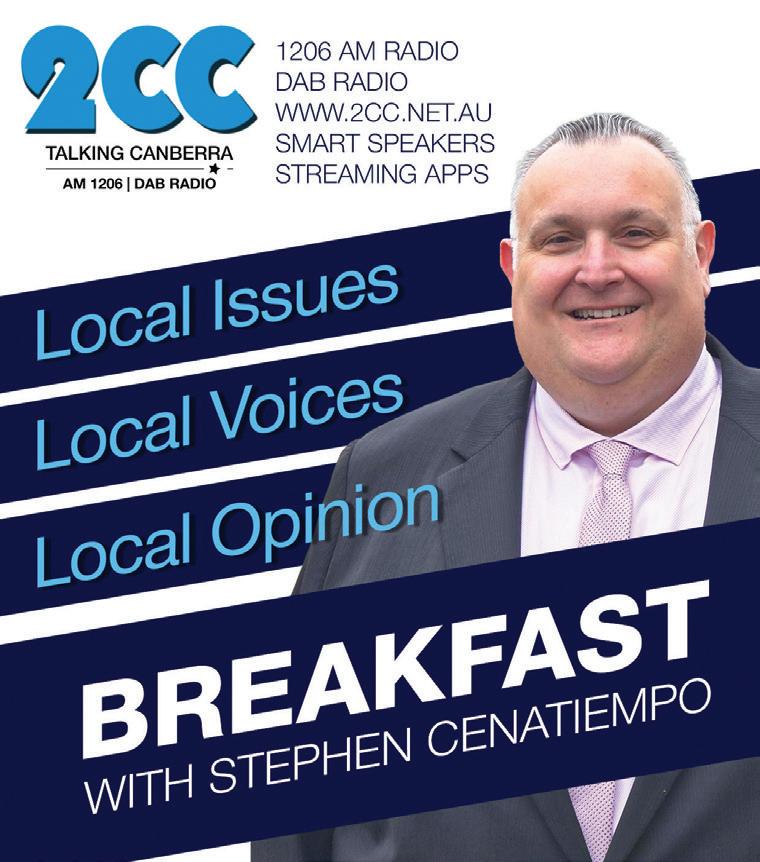
having fallen into a steam funnel at Hampton Court and Bertie’s late wife having been a trapeze artist who missed the net, all more or less irrelevant, but it adds to the fun.
The couple are just back from their honeymoon and they plan to move in with Julie’s parents when eccentric Aunt Dollie (Marian

FitzGerald) delivers them the budgerigar as a wedding present.
Here the plot is even more like that of Blithe Spirit. After Cecil starts to create trouble they try to get rid of the budgie, but it is found and returned to the house by a Russian international student Natasha (Eilis French).
Then, after Bertie chats to an American sailor in a pub, he gets the idea of trying to exorcise the budgie by using an onion, mixed herbs and a limp stick of rhubarb.
That works a treat, but the plot takes a twist when Professor Gaston Cheval turns up wanting to buy the budgie because it possesses a transmigratory soul, so they try to work out how to put the spirit back into the budgie. What could possibly go wrong?
Of course, it can be dodgy working with birds and in a 1961 London production, Elphick has discovered, the budgie got away in Act II and the show was brought to a standstill until it was back safely behind bars.
The cast, he reports, are having a great deal of fun working on their first big production for the year.
Right now, they’re looking out for new talent for their next show in OctoberNovember.
“We’re keen to find a director to put their hands up and come play with us,” Elphick says.
LoveBirds, Belconnen Community Theatre, May 30-June 7.




































When world-changing events unfold, the streaming statistics that follow tell their own fascinating tales about the way people are reacting.
Five years ago as COVID-19 spread around the globe, so too did the popularity of Contagion, a film about a deadly pandemic.
Despite many people sick of being locked inside, thousands still flocked to a story they felt they could resonate with at a time of international uncertainty.
When the Queen died in 2022 there was a similar reception to Netflix’s hit drama series The Crown, which chronicles her life and the wider royal family.
The show skyrocketed back into the platform’s most watched shows as people wanted to learn more about the woman on the back of the coins in their pocket.
Now the phenomenon has happened once again, following the death of Pope Francis.
In the last few weeks streaming of the Oscar-winning film Conclave has soared by 283 per cent with almost seven million minutes watched globally.

It’s currently available on Amazon Prime Video, but subscribers will still have to pay a fee to rent or purchase it. It certainly hasn’t stopped them.
Starring Ralph Feinnes, Conclave tells the story of the highly secretive election of a new pope.
Fiennes plays Cardinal Lawrence, one of the leaders chosen to oversee the vote and whose own conscience is thrown into turmoil after he stumbles across a string of secrets that could shake the foundation of the church itself.
It is fictional, but the writers of the film carried out deep research in order to make sure Conclave was in many ways accurate, albeit with some dramatic embellishments here and there.
Overall though it gets many of the processes and traditions of the election correct, giving viewers a glimpse inside the sequestered event and scoring itself the Oscar gong for best adapted screenplay in the process.
Much of the film centres around the political tug of war between two different factions of the church that see its future as
Francis’ own controversial leadership of the church in recent weeks. Many have called his legacy a progressive one, though others have pointed out he did not change the church’s position on issues such as same-sex marriage, contraception, nor the doctrine that disallows women from becoming priests.
The politics of the church and of which direction it is heading fiercely play out in Conclave, with many of these very same issues debated by the fictional cardinals of the film.
Stanley Tucci plays Cardinal Bellini, one of the front-running candidates who is reluctant to take on the leadership but who feels obligated to offer a liberal voice to the ballot. His main competitor is Goffredo Tedesco (played by Sergio Castellito), an Italian traditionalist who believes the path forward is through an unwavering conservative stance.
Perhaps what the popularity of Conclave most comes down to though is how people
is sky-high and its very private nature only increases curiosity.
While selecting the new pope, cardinals are locked inside the Vatican without any access to technology. No phones, no email, no messages. Electronic signals are even jammed to ensure total isolation. Not even newspapers are allowed in. It’s all designed to stop those voting from being influenced by the outside world.
The only thing the public does get to see is the release of black smoke or white smoke. Black when there’s still no decision or white when a Pope is finally elected.
To be able to get some kind of look inside the highly secretive selection process has proven an offer that the world can’t resist and for many people Concalve is as close as they’ll get to knowing what actually hap pens behind those historic closed doors.




By Helen Musa
For 17 years, the Australian River Restoration Centre has been working to secure the future of the country’s rivers and now, in an imaginative leap into the world of performance, it’s getting behind a gala fundraising concert at the National Museum.
The concert, Riversong, will be performed by Canberra choral group, The Resonants, preceded by a waternetworking event in the museum’s Gandel Atrium.
It’s all the brainchild of the centre’s director, Siwan Lovett, who is, by no coincidence at all, a member of the choir.
The idea is to expand, through ticket sales, donations and a silent auction, the centre’s advocacy and on-ground action and to seize opportunities that may fall outside the scope of traditional grants.
Rivers and music go well together, as evinced by the Australian Chamber Orchestra’s 2024 production, River, which saw music performed to moving imagery by Jennifer Peedom, voiced by US actor Willem Dafoe.
Riverdance will differ, with original Canberra music offerings and well-known local presenter Alex Sloan introducing the ideas and the songs to be performed.
The Resonants are among the real stayers in the Canberra musical scene.
Founded by respected voice teacher, singer and conductor Helen Swan during 1990, it features around 30 adult voices, mostly singing unaccompanied (a cappella), though not always.
Swan, who still keeps up a cracking pace leading The Resonants, her own singing business and U3A’s Warrani Chorale, had noticed that there was a gap in singing opportunities for people who had just left school.
But as the original young professionals and university students grew up, so did the choir, becoming a fixture in the Canberra arts scene and now boasting six strong tenors and six basses, which gives them depth as well as volume.
When I catch up with the choir’s president Allison Tryon, who has been a
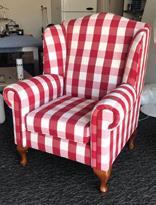


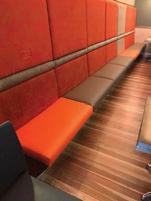
working member since 1991, I find that the excitement about Riversong is palpable.
Tryon praises Siwan’s brainwave idea of combining music and activism with the Riversong concept, an idea, she reports, that the choir picked up quickly.
They didn’t need much nudging. Over the years they’ve been involved in charity and community work, raising money in the wake of the 2003 Canberra bushfires and for victims of the Asian tsunami in 2004, to name just two causes.
This venture into the natural world is, she says, “kind of about us, but not about us, a lovely arts partnership.”
Filling the capacious Gandel Atrium at the NMA can be a tall order, so the singers will be accompanied by their regular pianist, Emily Leong, and augmented for some numbers with a percussionist and a bassoon player.
All the music will be backed by spectacular still imagery of riverscapes, enhanced by The Resonants’ uniform of sparkling scarves for women and silver ties for men.
The evening will open with The Spheres from Sunrise Mass by Norwegian composer Ola Gjeilo, followed by Down by the Riverside arranged by John Rutter, the spiritual, Deep River, Henry’s Mancini’s Moon River, Let the River Run by Carly Simon and Shenandoah.
Evoking the Australian landscape, they will then sing Three Australian bush songs (Dawn, Birds, and Sunset) by Iain Grandage, Ruth Kilpatrick’s arrangement of Waltzing Matilda, and This is our Home, by Paul Stanhope.
Canberrans are likely to be most interested in what follows: Weather Makers, by Kirsten Duncan, a long-time choir member who originally wrote the piece for A Chorus of Women and The Climate Council of Australia in 2016; and in the world premiere of Whisper of the Dying Stream: a Lament.
The latter piece was written this year by Sophie Van Dijk, an up-and-coming composer whose mum Kylie is one of the choir’s founding members.
The finale will be a big choral piece, Riversong by Andy Beck, which gives the title to the concert and, as Tryon says, will give the audience “something to remember as they leave”.
Riversong, Gandel Atrium, National Museum of Australia, May 17. No door tickets, bookings at riversong.au

In 1996, a gold plaque was erected on the side of a building in Kingston announcing the opening of Portia’s Place by Sir William Keys and The Rev. David Thiem.
Fast forward 29 years and this reliable, steady Cantonese Chinese restaurant, having changed hands only a few times, still goes strong in today’s truly volatile hospitality scene.
I’ve been a fan since Portia herself was at the helm and adore the current team as much for their attentive, friendly service as their continued focus on authentic cuisine. Portia’s Place is one of my “go-tos” when I’m looking for dishes jam-packed with well-balanced flavours.
Faves include the crispy duck with Chinese pancakes, some of the best Canberra offers ($42 for half-a-duck with six pancakes). Most times, the pancakes are assembled for diners at the table with a bit of fanfare. The meat is unfailingly tender (never fatty) and the pancakes wonder fully thin. The cucumber adds crunch and who doesn’t adore a thick, dark, sweet and savoury hoisin sauce?

Another dish we dream about is the soft steamed scallops on the shell ($20 for four), served with a delicate ginger and shallot sauce (finished with a splash of hot oil). They’re sensational.
We worship the crispy-skin quail ($16) with a hit of chilli. It’s marinated, lightly fried and tossed with spiced salt in a piping-hot wok to retain its moisture inside and crispiness on the outside.
Prawn lovers won’t go wrong with the sizzling garlic variety, with delightful, crunchy snow peas and rich, nutty cashews for ad ditional texture ($36).
Our group tends to order the “same-same”
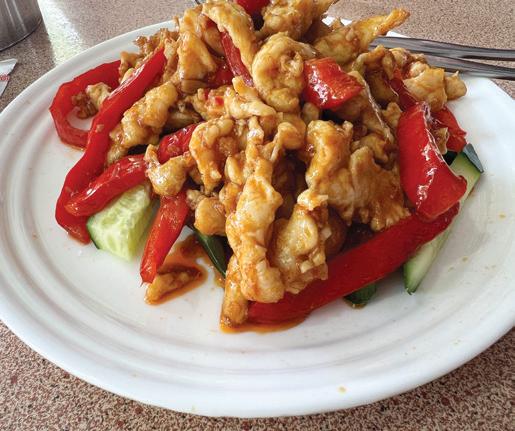
casionally, which takes me to the spicy mustard chicken (with three chillies marked beside it on the main menu, $28). The house-made mustard chilli oil was out-of-this-world and coated the tender chicken beautifully. It has plenty of kick and this stir-fry dish is created with yummy garlic soy sauce.
On a recent visit, we ordered the tried-andtrue san choi bao, a classic in its own right ($20 for two). The stir-fried minced chicken is mixed with onion, mushrooms and water chestnuts and
Wrap up carefully and enjoy every bite.
Portia’s main menu is confident enough to have kept many dishes on the menu for yonks, but that’s part of the charm. Plenty of rotating specials keep interest levels high.
Portia’s Place, on Kennedy Street, has plenty of indoor seating and, like the main menu, the décor hasn’t changed much. Outdoor dining, on basic plastic green tables and chairs, is limited. Takeaway is hugely popular.
April 17 was Malbec World Day, an event created by Wines of Argentina 15 years ago to promote the dominant grape variety grown in that country.
Malbec comes in at just over 40 per cent of reds made there in 2024 and is the most exported Argentine wine.
It is not a variety I now regularly drink, but when my son and I were in Britain in 2023, Argentinian malbec was our drink of choice.
It was good value for money, especially when compared with French wines, and frequently Aussie wines just weren’t available. Hopefully, the Argentine economy is no longer gripped with hyper-inflation that led to the somewhat cruel observation that in Argentina it’s cheaper to take a taxi than a bus, because in a taxi you pay at the end of the trip.
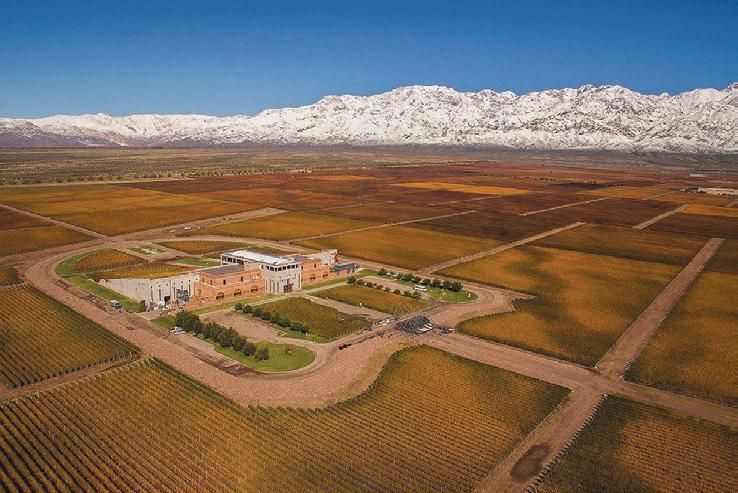
Royal Adelaide Wine Show and can be bought for under $40.
Malbec originated in Cahors in south-west France where it is often produced as a varietal and it is also used as a variety in Bordeaux blends.
In Australia malbec comprises less than one per cent of grapes grown, although there are some award-winning malbecs that are made in Langhorne Creek, notably the Bleasdale 2022 Generations Malbec, which won a gold medal at the 2023

April 17 is a date close to Easter so four septuagenarians decided to celebrate Malbec World Day and Easter at D’Browes for lunch. Looking at the four of us, much needs to be resurrected so Easter was a good time to be celebrating. Each of us brought along a bottle of malbec, although only two bottles were fully consumed. The two standouts, which we emptied, were both of a 2019 vintage, an Australian and an Argentine.
One of our number said: “So it’s another old world/new world comparison?”
“No, it’s a new world versus new world comparison because both Argentina and Australia have a young wine industry when compared with


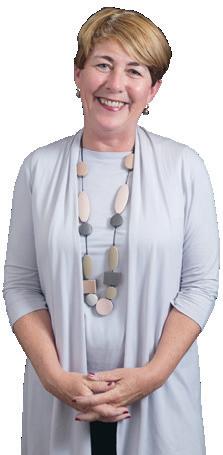
merlot, shiraz and cabernet sauvignon, all grown at high altitude in Mendoza located at the base of
lovely mouth-filling plum taste with a toasty oak
cent with a medium level of tannins giving the wine structure. It matched very well with the veal and mushroom special that two of us enjoyed for the main course. Vintage Cellars sells this wine for $37 and it is a very good buy at that price.
The Australian was from mate Tom’s favourite winery, Warrabilla, the 2019 Reserve Malbec plucked from his cellar.
Luckily this wine had time to decant, for it was a powerful 15 per cent alcohol by volume and had a jammy sweetness and lots of fruit flavours.
Except in colour, it differed markedly from the Argentine wine with no acidity, very fruit forward and bold, also a great match for the restaurant’s special. It was heady in every sense.
It was a difficult choice but in my view Argentina won the race by a nose unlike the last time I bet on a horse.
I said to mate Tom: “I put $20 on a horse last week and he came in at twenty five to one.”
‘Wow! you must be loaded’, said Tom.
“Not really,” I said, “the rest of the field came in at twelve thirty.”









COLIN STEELE retreats to the cloisters to review three books of disparate themes – biography, mystery and satire – but all based in academia.
Andrew Robinson has written 20 books, including two previously on Albert Einstein.
In Einstein in Oxford (Bodleian Library Publishing, $34.99) he narrows his focus, covering the three visits of Einstein to Oxford between 1931 and 1933.
Einstein is the archetypal 20th century image of the scientist.
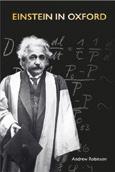
The cover of Einstein in Oxford has him in front of the blackboard delivering a lecture in May 1931 on relativity to highlight his being awarded an honorary doctorate.
Today that blackboard is the most popular object for visitors in Oxford’s History of Science Museum. The museum’s director, Silke Ackermann, who provides the foreword to Einstein in Oxford, has described the blackboard as “a unique relic of a genius”.
A nice aside to his stay was that Einstein took up residence in the Christ Church College rooms once occupied by Lewis Carroll. Einstein was in another type of scientific wonderland to Carroll.
Robinson provides fascinating vignettes
as to Einstein’s involvement in Oxford college life, science and especially his social life through his love of music.
Musicologist and German-speaking Margaret Deneke took Einstein under her wing with Einstein often playing his violin at musical evenings at Margaret’s North Oxford “Gothic villa” home. Margaret recorded her many conversations with Einstein in her diary, Einstein becoming known “as Miss Deneke’s little man”.

Einstein’s Blackboard at the History of Science Museum in Oxford.
with an Oxbridge academic setting where many of the authors were educated.
Einstein clearly enjoyed his time in Oxford, and initially considered making Oxford his permanent residence, but the scientific opportunities of America, and the distance from Nazi Germany, led to his taking up an appointment at Princeton University in October 1933.
Lessons in Crime. Academic Mysteries, edited by Martin Edwards (British Library, $24.99), brings together 15 short stories, published between 1932 and 1978, many
Edwards, a renowned anthologist and consultant to the British Library on their classic crime series, provides a lengthy introduction that links the development of the “Golden Age” academic mysteries through to the Oxford TV series of Morse, Lewis and Endeavour.

The stories represent their time dominated by male detectives, while the Oxbridge settings are decidedly class ridden. College servants and local inspectors
know their place when Lord Peter Wimsey and Professor Gervase Fen appear on the crime scene.
Nonetheless, when you have authors of the calibre of Dorothy L Sayers, Michael Innes, Michael Gilbert and Edmund Crispin, readers know they are in familiar crime territory.
Most of the stories involve a criminal act, although not always murder. Jacqueline Wilson’s 1978 story The Boy who Couldn’t Read moves into more modern psychological territory, as an autistic boy wins his battle with a bullying teacher
It may have been a golden age for a privileged few at universities in the 1930s when it was satirised by authors such as Evelyn Waugh. It was a different, but still a golden age, in the expanded universities in the 1960s and 1970s, satirised in novels by Malcolm Bradbury, David Lodge and Tom Sharpe.
Bliss, an over-the-top dystopian satire set in 2035 Britain.
The narrative follows the arrival of the newly appointed vice chancellor Gladys Nirvana, whose very large salary is based on her expertise in “pure reflectivity”.
Her vice-chancellorship is juxtaposed against the fate of two humanities lecturers as they attempt to resist the increasing bureaucracy, which includes Roxana Grogan, head of the Office of Continuous Improvement, “whose intellectual triumphs included a brace of Wow Techs” .

The University of Bliss by Julian Stannard (Sagging Meniscus Press, $40.95) reflects a much more depressing contemporary university scene, extrapolating from today’s crisis in higher education institutions with decreased funding and increasing internal and external bureaucracy. And let’s not mention Trump’s attacks on American universities.
Julian Stannard, a Reader in English at the University of Winchester (UK), reflects contemporary concerns in The University of
The Department of Wellbeing ensures that demoralised academics must stroke an increasingly depressed dog. The spiritual needs of the university are overseen by the Lady Bishop Imelda Wellbeloved, pro-vice chancellor, whose non-binary Shih Tzu, is called alternatively Ethelred and Ethel. Wellbeloved’s aim is to replace lecturers with robot dogs installed with the latest teaching software.
Professor Leech, the Dean of Discipline, rigorously monitors electronic communication on campus with lecturers retreating to converse in the unsurveilled “gender-neutral lavatories”. Saffron Fraud OBE, heading the Branding and Marketing Centre, takes his inspiration from Joseph Goebbels’ propaganda machine.
Stannard falls short of reaching the Tom Sharpe satirical top drawer, his settings being too extreme and his characters too broadbrush, but, nonetheless, his frameworks will undoubtedly resonate in academia.
Dion Pride, the son of legendary country music singer Charley Pride, will be in town singing the songs of his father, joined by original Charley Pride touring musicians, including Ronnie Miller on pedal steel guitar, Danny Hutchins on piano/keys and Mark Kalson on fiddle. Canberra Theatre, May 14.
Everyman Theatre’s first production for 2025 has a whopping title, If We Got Some More Cocaine I Could Show You How I Love You. Directed by Joel Horwood, the raucous romantic drama features Canberra actors Joshua James and Robert Kjellgren. ACT Hub, Kingston, May 14-24.
Pip Williams’ New York Times bestseller, The Dictionary of Lost Words, in a stage adaptation by Verity Laughton, follows Esme from her childhood in the 1880s, into adulthood at the height of the women’s suffrage movement and the beginning of World War I. The Playhouse, May 15-24.
Members of Super Rats have created an offshoot, Taraf Grozav, featuring some different Romanian repertoire and aiming for a rougher, unamplified texture. They’ll perform a night of fun, raucous songs and dances. Macgregor Hall, Smith’s Alternative upstairs, May 11.
Despite Banjo Paterson’s popularity, there have always been critics denying his work as real poetry. Now in a discussion for Canberra’s Spiral group, editor and publisher Matthew Richardson takes up the issue in a discussion with academic Harry Heseltine, who for 60 years has recognised Banjo as a poet. Uniting Church, 40 Gillies Street, Curtin, May 8.
The Australian String Quartet marks its 40th anniversary with Rapture, starting with Beethoven’s Serioso quartet, leading into the national premiere of Melbourne jazz composer Vanessa Perica’s No Feeling is Final
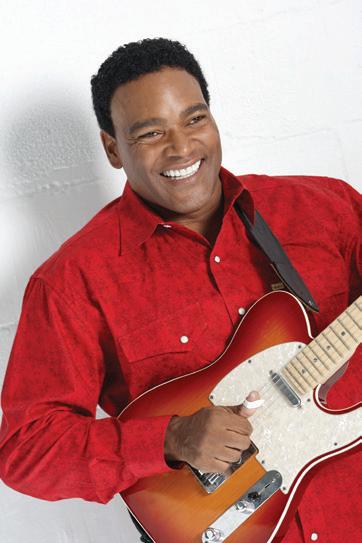
Pride… Canberra Theatre, May 14.
Polifemy women’s vocal ensemble joins BlockSounds recorder quartet in The Bridal Kiss, a Goose’s Tale and Auto Sales, a concert of humorous contemporary music covering everything from Aesop’s animals to an African birthday and a Jewish wedding. Wesley Uniting Church Forrest, May 17.


By Joanne Madeline Moore
ARIES (Mar 21 – Apr 20)
Have you been shopping up a storm when you should have been saving or paying off debt? If the answer is ‘yes’, then expect a financial hiccup this week as Mars, Mercury and the Full Moon highlight money matters and issues involving your personal values and self-esteem. The less you base your core self-worth on money, possessions, status, physical appearance and unrealistic media expectations of what beauty is, the healthier and happier you’ll be.
TAURUS (Apr 21 – May 21)
The Sun, Mercury and Uranus power through your sign, and the Full Moon stimulates your partnership zone. So, this week is all about the delicate dance of relationships – how to balance personal desires with the needs of others; independence with togetherness; solo projects with joint ventures. Mars is firing up your family zone, so there may some foot stamping and angry words before you get the balance right! On the weekend you’re keen to experiment and explore.
GEMINI (May 22 – June 21)
Watch what you say this week, Gemini. Hasty comments, garrulous gossip and spilling secrets could land you in hot water with family, friends, colleagues, neighbours – everyone! Instead of thoughtless chatter, concentrate on nutritious food, invigorating exercise and regular relaxation. Yep… a dose of discipline will help make your dreams come true. Be inspired by birthday great, actress Katharine Hepburn: “Without discipline there’s no life at all.”
CANCER (June 22 – July 23)
The Sun, Mercury and Uranus are visiting your networking and peer group zones, and the Full Moon stimulates your friendship zone. So, the more you mix and mingle, and the more connections you make, the better the week will be. Looking for employment? It’s time to capitalise on all your contacts. From family and friends to colleagues and casual acquaintances. Don’t wait for opportunities to magically appear. Be proactive about following your dreams!
LEO (July 24 – Aug 23)
Calling all Lions – sitting on the sidelines being a scaredy-cat will get you nowhere fast. This week dynamic Mars is transiting through your sign, and the Sun, Mercury and Uranus are revving up your career zone. So, it’s time to be a bold, brave, proactive, creative leader! Be inspired by Hollywood movie star (and birthday great) Katharine Hepburn: “As one goes through life, one learns that if you don’t paddle your own canoe, you don’t move.”
VIRGO (Aug 24 – Sept 23)
Mercury (your boss planet) makes tricky connections with Pluto and Mars. So, you’ll feel dissatisfied and may try to change things by criticising others and pushing your point-of-view, which could lead to domestic dramas, friendship fallouts or workplace disputes. But is that the best way to go? Wise words come from movie legend Katharine Hepburn (who was born on May 12, 1907): “You learn in life that the only person you can really correct and change is yourself.”
LIBRA (Sept 24 – Oct 23)
This week the planetary focus is on money and business matters, as Monday night’s Full Moon fires up your finance zone. But the Mercury/Pluto and Mercury/ Mars squares could throw a partnership challenge in your direction (perhaps involving jealous behaviour, arguments over money or power struggles). Your ruling planet, Venus, is visiting your relationship zone (until June 6), so do your best to play the perceptive, diplomatic Libran peacemaker.
SCORPIO (Oct 24 – Nov 22)
Expect an intense week, as there’s a Full Moon in Scorpio on Monday night. So, partnerships will be unpredictable, and family dramas will keep you on your toes. Maybe it’s time to simplify your life, cull some of your relationship commitments or give a fair-weather friend the flick? Look for creative, unconventional solutions that suit you and please others. Some strategic compromise may be necessary, and you may have to eat some humble pie!
SAGITTARIUS (Nov 23 – Dec 21)
Your career is about to get a welcome shot in the arm as the Sun, Mercury and Uranus barnstorm through your work zone. So, show your boss, colleagues and competitors what you are truly capable of. With an extra boost from the Full Moon, it’s definitely time to be creative, innovative and passionate, as you think outside the box. Draw inspiration from Hollywood movie star (and birthday great) Katharine Hepburn: “If you obey all the rules, you miss all the fun.”
CAPRICORN (Dec 22 – Jan 20)
A relationship with a lover, friend, child or teenager looks rather fractious this week. Pluto and Mars could stir up resentment, jealousy or anger, so tread carefully and act cautiously. With the Full Moon activating your hopes-and-wishes zone, it’s time to dream a big dream and then go after it with intense focus and plenty of passion. Don’t rush though! Heed the wise words of birthday great, actress Cate Blanchett: “Some ideas take time to form.”
AQUARIUS (Jan 21 – Feb 19)
You’ll feel restless this week, and the danger is you’ll go overboard and throw the baby out with the bathwater. Uranus imbues you with a sense of urgency, but self-discipline and gradual modifications are what’s required at the moment. It’s also important to strive to get the balance right between your personal and professional lives. Be inspired by birthday great, actress Cate Blanchett: “I live my life parallel with my work, and they are both equally important.”
PISCES (Feb 20 – Mar 20)
Monday night’s Full Moon shines a bright spotlight on travel, communication and education. So, it’s a good week to plan a holiday, catch up with international friends or complete a study project. And your financial future looks rosier, as lucky Venus visits your money zone until June 6. So – whether you get a pay rise, take on a second job, cash in some investments, organise a garage sale or sell an important asset – it’s time to make hay while the Sun shines!
Copyright Joanne Madeline Moore 2025
3 Name a Greek Cynic philosopher. (8)
7 What is a burrowing carnivorous mammal? (6)
8 To be lovable, is to be what? (8)
9 What is a standard rule, as of a company or society? (6)
10 What, in particular, was Harry Houdini? (8)
11 Name the lengths of timber etc, used for supporting ceilings etc. (6)
14 What is an account book of final entry? (6) 17 What are corpses also known as? (8)
18 When one mocks, one does what? (6) 19 What are transpositions of the letters of words or sentences? (8)
20 To disinter, is to do what? (6)
21 Name an alternative term for a photograph. (8)
1 Which sea-nymph in Greek Legend detained Odysseus on the island of Ogygia? (7)
2 To be never growing old, is to be what? (7)
3 What are sliding compartments as in pieces of furniture? (7)
4 What is household rubbish called? (7)
5 To be catching or seizing, is to be doing what? (7)
6 Name another term for a knitted jumper. (7)
11 What is a male donkey? (7)
12 Name a State in the central United States. (7)
13 What are inns also known as? (7)
14 What might we call the final part of a tennis match? (4,3)
15 Name a current of air in an enclosed space. (7)
16 What is a typical characteristic of something? (7)


This is the time of year when we sit down with our clients and review how they are travelling so that we can do any lastminute tax planning.
This week I’m going to share a few handy hints that may assist with your year-end tax planning.
The Australian Taxation Office (ATO) has indicated its areas of interest for the 2025 financial year: among them registration, lodgment and payment. So the ATO will be following up whether you have lodged and/or paid your tax liabilities.
Make sure that your lodgments and payments are up-to-date. If not, take action, it's always better if you initiate discussions with the ATO than if they contact you.
They are also following up on company loans, known as division 7A, and making sure that relevant payments have been made in the current financial year.
Capital gains tax is always an ATO area of interest and they are getting a lot more information on crypto investments so make sure to include all crypto statements when you see your accountant.
Property and construction are also important. Earlier in the year the ATO published a report stating that of the rental returns they had checked, 90 per cent were incorrect. So it's wise to make sure rental income and deductions have been reported correctly.
So, what can you do to minimise tax this year?
• As an individual you may be able to defer income until the next financial year. If you are buying or selling a property it may be expedient to defer signing the contract until after June 30 because certain CGT events are triggered on contract date rather than settlement date. It also means you have longer before you pay any resulting tax. I know this is a bit confusing because it is not always apparent that CGT runs from the contract date rather than the settlement date.
• You could consider bringing forward some deductions by receiving invoices before June 30. You may be able to prepay some expenses, but I recommend that you get advice before doing this. However, I can confirm that the instant asset write-off has been set at $20,000 for this financial year, so you could purchase that piece of equipment you need which costs less than $20,000. If it costs more than $20,000, you do not get a deduction for the first $20,000 and depreciate the balance.
• You could make some donations to a deductible gift recipient (DGR). You can check whether the charity you are considering is registered as a DGR on ABN Lookup. It's important that you don’t get raffle tickets or some other material benefit from the DGR as that precludes a deduction.
• Making a personal superannuation contribution is always a good tax deduction. Some funds stop taking contributions for the 2025 financial year in mid-June so if you are wanting to make a tax-deductible contribution, I recommend you make it in early June just in case.
• The maximum amount for which you can receive a tax deduction this financial year is $30,000, which includes any contributions your employer may make. You must provide a notice of intent to claim a tax deduction form to your superannuation fund and you must receive an acknowledgement from the fund. If you have carry forward concessional contributions then you could also make those before June 30.
• If you've been working from home, you'll be pleased to hear that the working-from-home rate increased to $0.70 an hour from July 1 2024, so make sure you have the correct records to substantiate a claim.
If you want further information about what you might be able to claim to minimise your tax for the 2025 financial year contact the expert team Gail Freeman & Co Pty Ltd on 02 6295 2844.
Disclaimer
This column contains general advice, please do not rely on it. If you require specific advice on this topic please contact Gail Freeman or your professional adviser. Authorised Representative of Lifespan Financial Planning Pty Ltd AFS Lic No. 229892.





